#vivere 44
Explore tagged Tumblr posts
Text
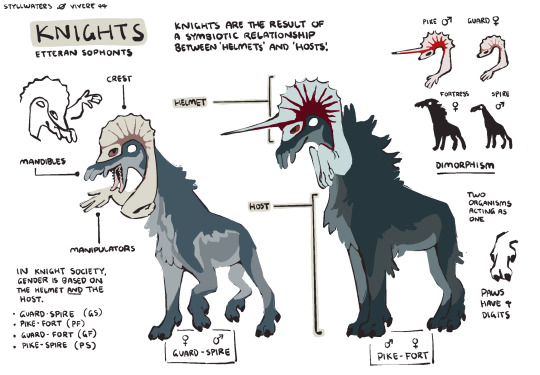
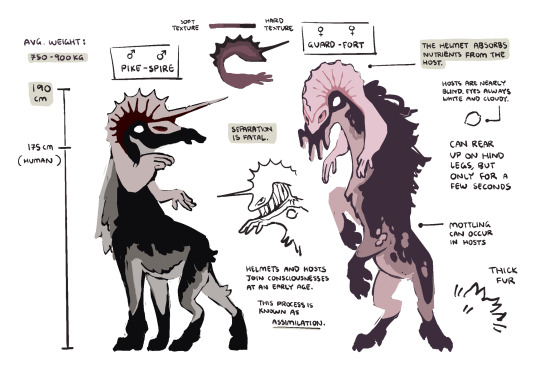

Hailing from the harsh planet of Ettera, Knights are the only sophont in the Zhagaviit system made of two consciousnesses. ---
At last, here they are! Nearly finished with redesigning every Vivere 44 species. These guys are retconned werewolves which I posted about some time ago. You might have noticed I brought back some space unicorn aspects as well! They've been through so many design changes but I've finally settled on something solid.
More information below!
I'll try to keep this concise. Most of this info is introductory biology.
Knights are the only sophonts living on Ettera, a mostly barren planet where survival is tough. Their civilisation is the least advanced compared to others in Zhagaviit, such as Arrows and Sea Crawlers. They were the third species to be contacted by the ZGC (Zhagaviit Galactic Community) followed by Post Humanity. Knights are known for being hardy, efficient, and motivated.
If it isn't already clear enough, Knights are two species in a symbiotic relationship acting as one individual. Helmets and Hosts have an evolutionary history so intertwined that one cannot survive without the other.
The Helmet is attached to the head of the Host, and will remain there for the rest of their life (unless separation happens - but we'll get into that later). In the relationship, their role is vision and dexterity. Since the Host is effectively blind, it is the Helmet's job to guide them. Their hands are also important, being the Knight's primary manipulators. They played a large part in early tool use. The Helmet lacks a mouth, and receives all its nutrients from the Host through a specialised organ not unlike an umbilical cord.
The Host is essentially the main body of the Knight. Wolflike and mammalian in nature, the Host is the Helmet's mode of transportation. Because they need to eat for two, Hosts are omnivorous and will eat just about anything. Although majority of their diet is comprised of meat, they are capable of digesting plant matter and bones. They are highly skilled and effective hunters.
It is in both party's best interests to assimilate as soon as possible. The Host cannot see without a Helmet, and within a few weeks bonding will become impossible. The stakes are higher for a newborn Helmet, because they cannot feed by themselves and will starve in under a week without a Host or an artificial feeder tube. Prior to first contact with the ZGC, Knights did not have the technology for artificial feeders, and infant death rates were high.
So how do two beings coordinate one body? The fact is that once assimilation occurs, they become one being. The Helmet's brain and the Host's brain are connected by millions of nerves exchanging signals. It's complicated, but the best way to describe the experience would be a 'mutual trance' in which full body coordination is achieved. They have shared interests and intentions. However, a Knight can mentally separate the Helmet and the Host, gaining back individuality; they do this for many reasons, perhaps to discuss something among themselves or simply for company. Yet on the whole, a Knight will spend 80% of their life in this 'trance'.
Both Helmets and Hosts have noticeable sexual dimorphism. Male Helmets are called Pikes, and females are called Guards. Pikes are distinguished by their horn, bold stripes, and more prominent crest spines. Guards lack a horn and have less contrast in their thinner markings.
Female Hosts are called Forts. They are larger than males and have a mane of fur on the back of their necks. Male Hosts, Spires, lack this mane.
In Knight society, individuals are usually referred to based on their combination of Host and Helmet. Since there are four sexes involved, there are four possible combinations.
Guard-spire [female Helmet, male Host]
Pike-fort [male Helmet, female Host]
Guard-fort [female Helmet, female Host]
Pike-spire [male Helmet, male Host]
(Knight languages have their own version of pronouns for each, but in English all are referred to as they/them by default. Of course, each individual has their own preferences. Usually a Knight will refer to themselves as we/us).
____
I'll get into Knight social structure, cultures and more in another post! For now, if you have any questions, feel free to send an ask. Always happy to answer!
#vivere 44#speculative biology#spec bio#my art#art#knights#aliens#speculative evolution#spec evo#xenobiology#artists on tumblr#science fiction#worldbuilding#headworld#its finally DONE
2K notes
·
View notes
Text

A DTCA submission of @styllwaters ’s character Gazi-Miah.
#this was fun practice for drawing backgrounds#wanna get around to drawing more scenes#the gallery#other people’s worldbuilding#vivere 44
103 notes
·
View notes
Photo
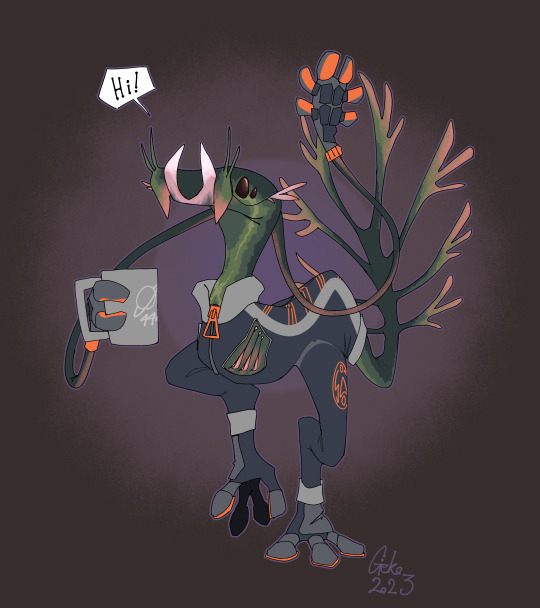
my part of an art trade with @styllwaters :)
(btw, dude, like Esznats design is an absolute killer like how do u come up with this stuff everyones design from vivere 44 is absolutely fire im beynd impressed u make me feel dull (thats a cimpliment))
59 notes
·
View notes
Text






Some of this year's digital ArtFight attacks!
The characters belong to @t34-mt, @styllwaters, @gumifan222, @feyvagabond, @hylasregilla and @secondsonaym !
23 notes
·
View notes
Text


KNIGHT DEITIES
It's been a hot minute since I posted Vivere 44 art. Been intensely busy with school for the past few months but now that I've graduated I've got a lot of time to kill! Since the Knights post surpassed 1k notes I figured I may as well elaborate on them more. I'm so blown away by how much love they're getting already! Thank you all <3
I'm gonna talk a bit about Mountain and Plains Knight religions, mythology and a snippet of evolutionary history. I will cover Polar Knight religions in another post. The focus is on two gods in particular, Uwet-Jana and Kiraiarik.
_______
Uwet-Jana is the demigod of good health, vitality, and inner balance. In some regions they are also the god of fertility. The name of their Host is Uwetsil, and their Helmet is Serrjana. Mainly worshiped by Mountain cultures, Uwet-Jana takes the form of a Knight whose Host and Helmet are physically merged into a singular being.
Kiraiarik [pronounced ki-rai-ah-rik] is the personification of the host-helmet symbiotic relationship. They are the god of symbiosis, rebirth, and love. Kiraiarik was the name given to two immortal partners, a Host and a Helmet, who began as a singular being born to the sea in Ettera’s prehistoric era. Ettera decided to make them Two, one half (the Helmet) ruling over the sea and the other (the Host) having domain over the land. The story goes that in every form they take, they try to find each other - for their body remembers being One.
Both gods have lots of lore to their name. Further information below!
UWET-JANA
Uwet-Jana's Host body has long spines and red stripes like a Pike, and long fingerlike paws like a Helmet's manipulators. The Helmet section sports two long horns and elegant facial markings. Uwet-Jana has an iridescent sheen on their golden fur, catching the rays of the sun in a shimmering glow.
The story of Uwet-Jana is as follows: Both Uwetsil and Serrjana were born as runts, in a dark time when sickly Knights were seen as curses and not worth caring for. Their Order, believing them to be bad omens, cast them out to wander the tundra alone. They believed that the natural forces of Ettera (the Knight’s homeplanet) would quickly end them. However, Ettera took pity on the castaway, sending them three blessings. The first gift was a bone with marrow inside that ensured one is never hungry or thirsty again. Then, Ettera sent a warm, sweet wind into Uwet-Jana’s lungs which warded off all sickness and disease. Finally, a sun shower fell, the rains cleansing them and blessing them with a coat made of ivory and gold.
Transformed into a demigod with a hybrid body, Uwet-Jana was offered a place among the deities in the sky - but they refused, preferring to stay on the ground to share their gift with the mortals. Unbeknownst to them, their Order who had exiled them was struck by three curses from the Gods to mirror Uwet-Jana’s blessings: all the rivers in the area dried up and all their hunts were unsuccessful, leaving them with no food or water. Infections and diseases picked them off one by one, and a great storm ravaged the land, destroying their home and all remaining survivors. Uwet-Jana now blesses Knight Orders who take care of their sick and ailing members, and ignores those who don’t, leaving them to the wrath of the Gods.
Although they are nomadic and always on the move, many Mountain Orders will refuse to leave any sick members behind. They may also keep ivory statues of Uwet-Jana in their bags as a token of good fortune. Sometimes these statues are filled with bone marrow, or have holes which make a whistling sound as wind passes through it as a reference to Ettera’s gifts. Occasionally Pike Helmets are born with an extra long ‘horn’ spike, and are considered a child/reincarnation of Uwet-Jana. Additionally, whenever it rains while the sun is still shining, it is seen as a blessing from the demigod.
_______
KIRAIARIK
Kiraiarik's Host is depicted as a small creature with a striped pelt to mirror its ancestral form, and the Helmet as an aquatic beast with long, trailing red fins. It is frequently shown twisting around the Host, sharing its blood. Kiraiarik is also often simplified as two disembodied eyes looking at each other. (And yes, the artstyle is a nod to medieval depictions of heraldic beasts!)
To understand Kiraiarik, one must be aware of how much Plains religions are intrinsically tied to concepts of evolution and paleontology.
Digression on the origins of Etteran symbiosis:
Large stretches of Plains Knight deserts and scrublands were once submerged beneath the sea. As a result, there are countless fossil hotspots which have been unearthed over the centuries. These high concentrations of fossilised remains have lead to Plains cultures basing their religions around said discoveries. Although many features have been warped, the general timelines are strikingly similar.
For instance, a mass extinction event occurred on Ettera millions of years ago, caused by a series of catastrophic volcanic eruptions on a worldwide scale. This event is known in Plains culture as The Remaking, traditionally interpreted as the planet shedding its skin. Many species were decimated, but some groups survived; these happened to be phyla who possessed an exposed ‘Interfacer’ organ, a precursor to the specialised Integrator organ which connects the Host’s brain to the Helmet’s. Before The Remaking, there was no prior record of the deep symbiotic connection which Knights possess (scientifically deemed ‘Hyperadvanced Mutualism’). The Interfacer organ was used in the phyla for species to communicate simple stretches of data to each other, such as health and reproductive status. After the extinction, populations of these species were dwindling. To ensure their survival, an odd phenomenon occurred in which many individuals began to interface with different species who possessed the same organ - strangely enough, some were able to successfully exchange information. These individuals survived and passed on the practice to their offspring, eventually culminating in what would be discovered as a very primitive form of mutualism. Host and Helmet ancestors (pictured above) were some of the first species to achieve this.
As the planet recovered and populations increased, the relationship continued to solidify and become more complex, with symbiotic species sharing memories, emotions and complex thought. In modern times there is now an entire class of organisms on Ettera which possess an Integrator organ for Advanced Mutualism, including Knights.
Kiraiarik is said to be a manifestation of this relationship. After The Remaking, their two halves finally managed to find each other again, eternally locked in a joyous dance of love. (Side note: the love in question is not platonic nor romantic, but a deeper kind which is indescribable and not easily understood. Due to their intricate nervous systems, Knights have a higher degree of emotional intelligence and can experience sensations we would consider alien). When a Plains Knight is experiencing inner turmoil, they will often pray to Kiraiarik to restore a healthy connection. The god’s blessing is also called upon when an infant Host and Helmet first Assimilate.
Note: Many Plains ‘saints’ and deities have palindromic names which can be read both forwards and backwards, an indicator of holiness. Fun fact, the word Kiraiariku means “Your heart and mine are very old friends.”
Thank you for reading! More Knight content coming soon ;)
#come get yo foood#vivere 44#my art#knights#speculative biology#spec bio#speculative evolution#sophonts#spec evo#xenobiology#art#illustration#worldbuilding#artists on tumblr#good god I have been working on this for over a month.#also been playing around with a fun new brush#a bit painterly and experimental
1K notes
·
View notes
Text
KNIGHT ETHNIC GROUPS, ORDERS AND CULTURES: A GUIDE
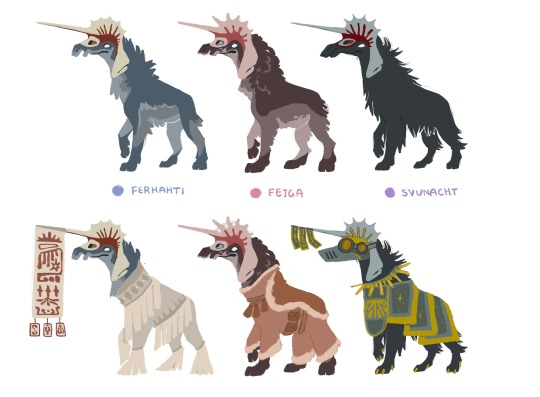
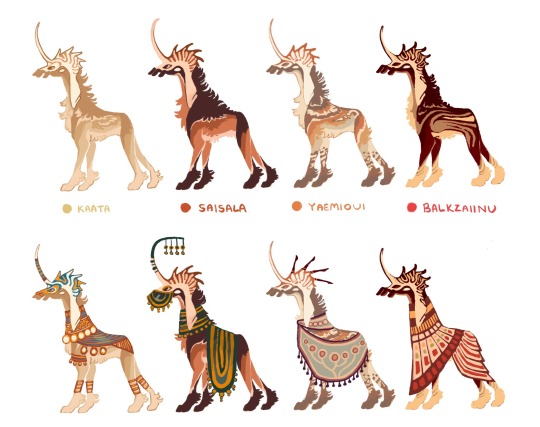

MAP OF ETTERA (Knight Homeplanet)

Standard map [continents shown]

Regional map [territories shown]
✦ ✦ ✦ ✦ ✦ ✦
I have here a weeks worth of writing and art because I for some reason enjoy torturing myself! I've been slaving away at this for so long but it's finally done and polished. So! As promised, I'm gonna talk a bit about the different Knight cultures/ethnicities, territories and general social structure.
Knights are one of my alien sophont civilisations from my Vivere 44 headworld. Here are more links from my previous posts:
Introductory post
Knight deities
Knight languages and names
With that being said, worldbuilding textwalls below the cut!
____
First, an explanation of the maps.
CONTINENTS
There are three main continents on Ettera. The two polar landmasses are Thannoeh in the northern end and Nahrui in the southern end. Thannoeh is divided by east and west, and is home to the two major Polar Knight nations. Nahrui is not occupied by any, aside from explorers or scientists. For many Knights, it is a strange, enigmatic land and a topic of great curiosity. In the middle is Val-srat; the central continent inhabited by Mountain and Plains Knights. The landmass is named as such because it is often represented in folklore as a Knight, with Valazear (the ‘Host’) being the southern Plains territories and Srati (the ‘Helmet’) being the northern Mountain territories. The Ihmna Stretch is the section of land connecting the two countries - ‘Ihmna’ is the Ferhahti word for the Integrator organ which joins the host and helmet’s consciousness.
Plant life on Ettera takes on hues of red and orange.
____
Before I get into the different ethnicities, I should elaborate more on how Knight Orders are structured and the different titles; some of the clothing articles are specific to status.
SOCIAL STRUCTURE
Most Knights live in groups called ‘Orders’, which I talked more about in this ask.
The standard roles for an Order are as follows:
Commander - Makes decisions, protects and supports the group. Commanders lead the Order across difficult terrain, plan out hunts, and take care of their members. A Commander might be chosen based on generational succession, experience, or strength. Depending on the rules of the Order, a Commander might be challenged by a Knight who desires their position, although only an elite or lieutenant would be permitted to do this. In more traditional and conservative orders Commanders are always Pike-forts.
Lieutenant - Second in command. The Lieutenant is the Commander’s primary advisor and runs the Order when they are unable to. A Commander may train their lieutenant to one day take their place as leader, or a lieutenant might serve multiple generations of Commanders without ever challenging them.
Elites - A selection of Knight soldiers who are exceptionally experienced, strong and fast. Highly respected by the rest of the Order and carry out important duties such as organisation. They have the highest chance of being the next lieutenant or Commander.
Soldiers - The main body of the Order, fully grown Knights who are proficient in all the skills necessary for survival. Soldiers are tasked with a variety of jobs to keep the Order healthy and running: they are also farmers, medics, entertainers, strategists, builders, etc.
Scouts - Scouts are Knights who make reconnaissance trips for the Order. Their job is to gather information about a potential area to settle or travel through. Scouts also have a range of other responsibilities, such as acting as lookouts, messengers, and taking care of Pages.
There are two types of Scouts - temporary and permanent. Temporary scouts are Squires (16-17 years) who have completed their training and are performing Expeditions, which they are required to do before becoming a full soldier. On Expeditions two or three Scouts will travel a certain distance away from the Order, sometimes miles away, to deliver goods to other Orders or to simply evaluate an area/route. Permanent scouts are lower-ranked Knights who are unable to become Soldiers, prefer a caretaker role, or have been relegated to the position.
Squires - Knights in training. Squires learn from a Soldier assigned to teach them. They may be tutored one-on-one, or taught in a group. They learn the ways of the Order and the world around them. Squires will often be assigned small hunting trips with their tutor, or cleaning jobs. Typically aged 7-15 years.
Pages - The youth of the Order, Knights aged 0-6 years. The pages are fiercely protected by every member of the Order. A newborn Helmet or Host will stay with their birth parent/s until they have assimilated, in which care duty is passed on to a permanent Scout. The Scout raises the Pages alongside several others until they are ready to become Squires.
This structure originated from Mountain Orders and spread to Plains and Polar regions a long time ago. Of course, not every Order follows this plan exactly, and there are countless variations. Some Knights don't live in Orders at all, and may live in pairs (which is common for travelling merchants and explorers) or small groups. Very rarely, a Knight may travel alone. This is the case for exiles.
____
You may already be familiar with the Mountain, Plains and Polar Knight regional varieties, but within these subspecies are various ethnic groups.
THE ETHNICITIES
✦ MOUNTAIN ✦
✦ Ferhahti [Ferhaht]
The Ferhahti Knights are an ethnic group located in the Ferhaht territory of Srati. Their thick fur is of various shades of grey and grey-blue. Their clothing styles are typically beige and tan, often complete with rectangular tassels and red accents. The Ferhahti have a ‘New Years’ festival called Khulaam in which they call upon Etteran spirits to bless them with good harvests, hunting and rain. During these festivals there is music, food, dancing and socialising with others. Allied Orders, usually 2-5, will come together to celebrate. Celebrations last five days. Alliances may be temporary or long-lasting, but the Orders will go on a hunt on the final day to bring down a large quarry. Oftentimes there will be a ‘Herald’ dancer who bears a flag on their horn, depicting glyphs of good fortune.
Since the Ferhahti and Kaata territories are neighbouring, and have no physical borders, Orders from both lands will often meet to trade goods and information. Many Plains-Mountain hybrids are of Ferhahti and Kaata descent due to the close proximity of the nations.
NOTE: Plains and Mountain Knights are capable of producing hybrid offspring, although they will be infertile. Neither Plains nor Mountain Knights can produce viable hybrids with Polar Knights.
✦ Fejga [Fejg]
Fejga Knights (pronounced Fej-ya) make their home in the Fejg archipelago. They are generally of a bulkier physique than other Mountain Knights, have a coat of thick fur and are well adjusted to chillier climates. They also sport a ‘saddle’ marking on their backs and are likely to have mottled/freckled patterns and blue eyes. Their Orders are partially seafaring, with many sailing from island to island in magnificent ships. Fishing is a large part of their lifestyles as the sea provides a stable source of food.
Their clothes are frequently made from leather and wool from domesticated animals. It is deceptively thin, as their pelts already provide natural insulation from the cold. Fejga Commanders wear three silver piercings on their Helmets.
✦ Svunacht [Svun]
Svunacht Knights live within the mountain-bordered territory of Svun and the island of Naahek. Orders have a special ceremony for choosing their Commander. The next in line, usually a chosen Host and Helmet born of the previous Commander and their partner, must journey across the Asall mountain range which borders Svun. It is a treacherous, long passage, and requires the Knight to wear a mask to block out the searing winds. They must also wear a spiked collar as a traditional accessory and safety measure to deter larger predators which roam the mountains. They are forbidden from carrying firearms, only armed with a knife, their wits, and natural defences. Ceremonial garments are required, passed down through generations, and three slips of fabric are worn on their horn for good luck: representing strength, wisdom and tenacity. The journey, called the Meha, is the final step in a long series of rigorous training for future successors.
The painting of Helmets is also a large part of Svunacht culture. It is typically only reserved for Commanders, Lieutenants or Elites.
★ PLAINS ★
★ Kaata [Kaat]
Kaata Knight Orders inhabit the deserts of Kaat. They are perfectly suited to desert life, their tan coats reducing heat absorbed from the sun. Kaata Knights make their clothing from woven fibres of plants that are garnished with gold pigments derived from a natural mineral found in the sands. They are especially known for their proficiency in fine crafts, and often trade jewellery to Ferhahti Orders across the Ihmna Stretch connecting Kaat and Ferhaht. Kaata clothing tends to be highly detailed and ornamental, with shiny beads adorning arm cuffs, necklaces, mandible rings and horn sleeves. The many gemstone and fossil deposits in Kaat are also incorporated into their styles. Like the Svunacht Knights, Kaata also paint their Helmets, although the practice is not restricted to any particular titles.
★ Saisala [Saisal]
Saisala Knights live in and around the deltas and rivers of Saisal, the southernmost territory of Val-srat. The area is filled with marshlands and everglades, and the weather is more wet and humid than the dry plains of Kaat. Saisala forts sport a dark reddish mane that grows right down their backs and bears some resemblance to maned wolves. Their pikes have hooked horns and sloping spines, as well as more ‘splotchy’ red stripes. Their Helmet eyes also have a pale ring around their pupils.
Saisala clothing styles are characterised by draping, ovular shapes and translucent sections of fabric. The green and gold drapes in the drawing are traditional wedding garments, complete with rounded tassels and a horn extension for pikes. The hanging ‘coins’ have engravings which tell a short but sweet poem.
★ Yaemioui [Yaemiou]
Yaemioui Orders live in a similar environment to Saisala Knights, in the wetland territories of Yaemiou. Their coats are pale like Kaata, but come in a greater combination of hues such as orange, grey and vermilion. Fun fact: all Plains Host pups are born with faint spots to help them camouflage, like lion cubs. Most lose these markings as they grow older, but Yaemioui hosts retain them even in adulthood. Their patterns are similar to painted dogs. The Yaemioui have a rich storytelling culture and have records dating back thousands of years.
Their clothing styles utilise dusky, non-bright colours that are usually two-piece. The outfit in the picture is worn by an elder Pike-fort who has carried and sired many offspring. The spine extensions are an indicator of age and experience, and a mark of high respect. The scarf around their neck depicts circles symbolising their Helmet children, and the circles on the larger cloth represent their Host progeny.
★ Balkzaiinu [Balkzaii]
On the island of Balkzaii reside the Balkzaiinu Knights, who have dark stripes on both their Hosts and Helmets and short curly fur. Unlike other Orders, Balkzaiinu communities rarely ever hunt - they were one of the first countries to develop farming and agriculture, and import a lot of domesticated animals to Saisal and Yaemiou. They are also the only country that has no Commanders in their Orders, and decisions are made by a council of higher-ups. They live in a tropical climate which receives lots of rainfall and cyclones. They are also masters in boat making and sailing, and contacted the mainland several centuries ago. Balkzaiinu have different decency standards than other Plains Knights, and in their culture it is considered proper to cover the neck area. Their clothing is generally layered and contains colourful, square designs.
✧ POLAR ✧
✧ Aikka [Ehtte Thannoeh]
Aikka Knights have domain over the Eastern section of Thannoeh. The polar word for East is Ehtte, and West Uesse. Since the country is so close to the Fegj archipelago, the two have been in contact for a long time.
Aikka have pristine white fur and a slightly bluish tinge to their Helmets. As with all Polar Knights, they are much smaller than their Plains or Mountain relatives, but are incredibly tough and hardy as a result of surviving in one of the harshest biomes. Ehtte Thannoeh is associated with scientific prowess, discovery and knowledge, and many famous Knight explorers are from Thannoeh. There are several research stations on Nahrui that are run and managed by Aikka; they have no difficulty working in the icy environment. Aikka Knights are also experts in carving, sculpting figurines and charms from the ivory tusks of marine animals. The outfit depicted in the drawing shows an Aikka Scout wearing a pendant with a carved basilosaurus-like animal for spiritual protection. These pendants are often given by parents to children. Their coat has six pockets for navigational instruments, goggles, knives, a spyglass, medical equipment and more.
✧ Myet [Uesse Thannoeh]
Myet Orders have less contact with other regions than Aikka. Residing in Uesse Thannoeh, Many of them live further inland. Myet Hosts have a more yellowish tinge to their fur and their Pike Helmets have a tan stripe. The Helmets also have a more rounded 'snout'. They have managed to domesticate a large predator which defends their camps and is used as a mount/companion. Like the Balkzaiinu, Myet Orders have a different structure than most, having two Commanders, usually a mated pair, and no lieutenants or elites.
Myet clothing is more minimal than Aikka styles. They usually cover the back with a ‘saddle’ and manipulators with gloves. The outfit drawn is of a Commander, distinguished by the ring of fabric around their horn and eye makeup. In their backpack they carry hunting weapons, and wear a knife sheathed at their side.
_________________
And that's a wrap! Thank you for reading, this project is truly a delight to work on. I leave you with some messy concept art I did a while ago for Mountain Knight clothing styles.

#read my lore boy#i got some asks about people wanting to make knight ocs which inspired me to finish this haha#vivere 44#speculative biology#spec bio#spec evo#speculative evolution#worldbuilding#writing#my art#art#illustration#artists on tumblr#knights#xenobiology#is this enough tags
964 notes
·
View notes
Text
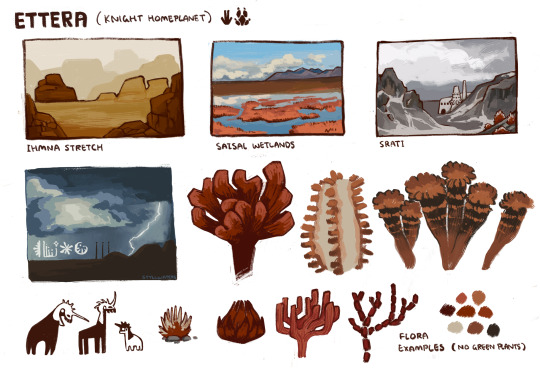
Just occurred to me that I never posted these images and they've existed for months. Here's a little environment guide I made during artfight for those wanting to draw my Knight characters. The planet Ettera is dominated by crimson and orange flora, tough and hardy like the rest of its inhabitants.
The images above are just a few snapshots of the planet.
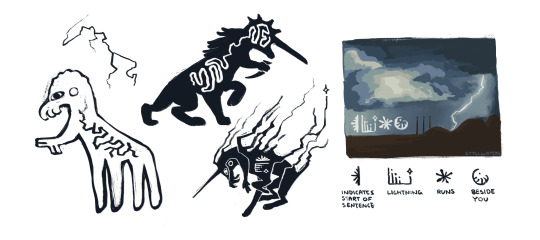
(Some bonus lore from ages ago but still very relevant. Further info under the cut)
It is common practice in Mountain Knight society to worship storms, which are a highly common occurrence in Srati and the Ihmna Stretch. They place a lot of importance on them - cyclones and hurricanes are revered for their power and might, and are respected as one would respect a person.
They believe that the electrical energy that you have inside you rises up to the heavens when you die and lives within the clouds, forever dancing in the winds and rain. Sometimes, the deceased come down to visit the ground in the form of lightning. When it is storming, it is a time for spiritual reconnection and communing with the divine. Instead of churches or temples Mountain Knights have 'lightning fields' which are stretches of land with tall tower-like structures scattered around. These objects are built to attract lightning strikes during storms.
The phrase 'Lightning runs beside you' is a common goodbye for Mountain and Kaata plains knights, who adopted some of their culture. Its shortened into one word. It essentially means those who came before you will guide you until we meet again, like calling upon ancestors to protect you. On the flip side they can also be invoked in anger - calling it down to strike someone you hate, but it is said that the ancestors will only listen if they believe the other person has truly wronged you.
#vivere 44#knights#spec bio#worldbuilding#speculative biology#lore#my art#art#illustration#artists on tumblr#storms#alien#conlang#i guess?#spec evo
859 notes
·
View notes
Text
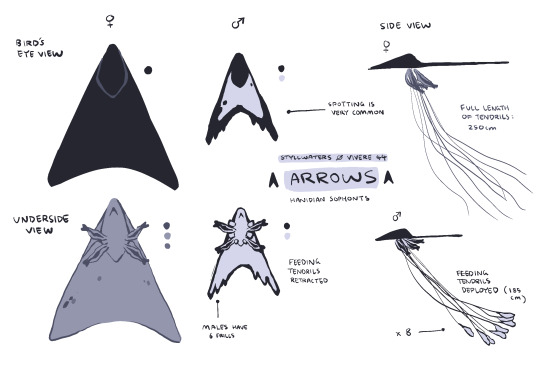

Primarily airborne sophonts hailing from the low-gravity planet of Hanidias, the Arrows are one of the oldest species in the Zhagaviit Galactic Community.
___
Introducing Arrows officially! These guys are the revised version of my older spec bio species, the Angelum. They've since undergone a lot of changes. Further information below!
Before I begin, I would like to make some things clear. A lot of the lore in the old Angelum info post is now irrelevant. Here are the revisions:
The Sacrazoa, Thronalia and Seraphae subtypes do not exist. Additionally, there is no 'Original Angelum'.
Previously I stated that the entirety of the population was genetically modified, but I've retconned this to only a select few individuals.
The only Genizix-touched Arrows are the Higher Arrows, which I will delve into later.
Lifepods do not exist.
Rather than communicate telepathically, the Arrows communicate with chemical signalling/pheromones.
Now that that's out of the way, time for some fresh new lore!
___________________
Arrows spend a good amount of time floating in the air. They possess a specialised 'gas bladder' which they can inflate and deflate to control their position, slightly similar to how a fish controls its buoyancy in the water.
They do not have the same level of agility as a bird or other winged creatures, their lack of powered flight making them significantly slower. However, they can change direction, dive quickly, land, and often take advantage of air currents and wind to increase speed.
Arrows feed on floating 'aeroplankton' which thrive in the atmosphere of their planet. Concentrations of these microscopic lifeforms are farmed in enormous quantities. Arrow's feeding tendrils are typically only deployed when they are eating; the aeroplankton is absorbed into the tendrils and nutrients are transported upwards to the main hub. However, they can also be deployed for courtship displays (especially for the males) and dancing.
Arrows, in the past, were the target of many predators. They were mainly concerned with attacks from other smaller, faster, flying organisms. To combat this, their five eyes aided in a wide peripheral vision enabling them to spot trouble quickly. In addition, they evolved countershading in order to camouflage with the dark sea below and the cloudy sky above. Males sport a more contrasting palette, clearly outlining them against the sky, but those who were able to survive indicated a viable choice for a mate.
Nowadays, with safer areas, infrastructure and impressive technology, predators are no longer a threat.
There are four main ethnic groups on Hanidias; namely Cursors, Needles, Indicators and Darts. Cursors and Needles mainly reside in the skies above the open ocean and cliff sides. Indicators make their home in the icy Northern and Southern poles, and Darts above the brackish river water further inland. However, all Arrows are very widespread.
___________________
This is just an introductory post - there's still a lot to say about these fellas - but i'll leave it there for now. As always, asks are welcome!
#vivere 44#speculative evolution#speculative biology#spec evo#spec bio#aliens#arrows#art#my art#xenobiology#xenofiction#i've had this in my drafts for like 2 weeks
625 notes
·
View notes
Text

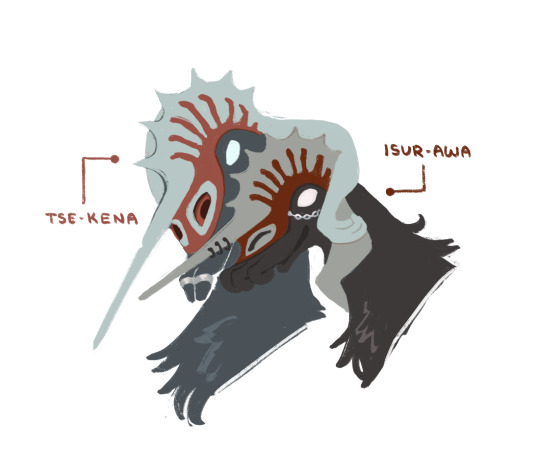

Rejoice, roleplay characters be upon ye
Been very occupied lately with playing toys in my discord server. These are all a part of the collaborative Space Station AU which I mentioned in my last art dump!!
(Bonus Si'Saak under the cut)
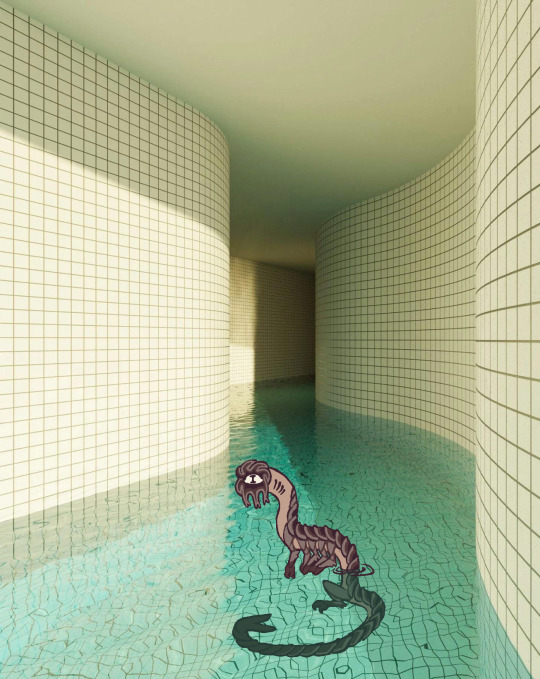
#alien time#my art#vivere 44#none of these are canon to v44 but i have grown very attached to them these past few weeks (whoops)#if you're not in the server and would like to know more about them send me an ask :P#spec bio#knights#sea crawlers#speculative biology#space station au#spec evo#art#artists on tumblr#I don't like picking favourites but just kidding its KJ
495 notes
·
View notes
Text

Dozing off
--- Quick thing with Jes-ren and their grims, dog-adjacent Knight companion animals. Jes-ren is a world-weary plains guard-spire who owns a 'cattle' ranch on the Ihmna Stretch.
After several ill-fated friendships and brushes with grief they have elected to keep others at arms length (apart from their grims of course, who provide an invaluable service in herding livestock).

(reference sheet circa June 2024)
#vivere 44#spec bio#oc#speculative biology#art#my art#knights#sophont#alien#creature#original character#illustration#artists on tumblr#worldbuilding#for those wondering yes the grims are related to knight hosts#also. beans
378 notes
·
View notes
Text

Doodles of one of my rp characters Kir-java as a page because I need to draw more baby Knights
#art#my art#vivere 44#knights#speculative biology#oc#spec bio#original character#really like how this turned out actually#character in the top left is Sve-hasht their pike-fort parent#they suck
321 notes
·
View notes
Text
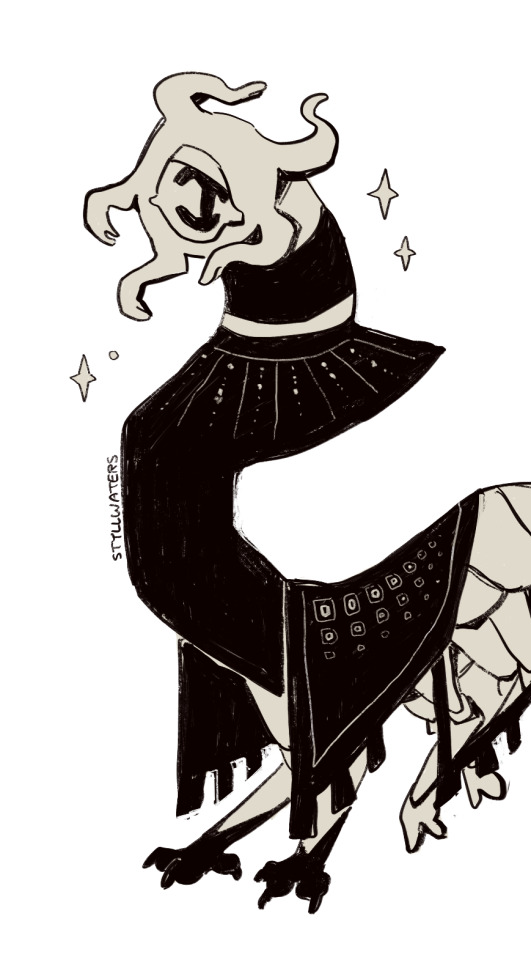
Long time no Vreaz. Here's a fancy shrimp for your troubles
#vivere 44#art#speculative biology#spec bio#key part of his character is just the drip#sea crawlers#i'll draw him properly eventually#alien#oc#original character#my art#illustration#creature#vreaz
318 notes
·
View notes
Text

It's been a hot minute since I drew Vreaz. Whipped up some outfit refs for Artfight!
Vivere 44 is going through major story revisions, and this includes aging up some of the cast. Vreaz is now 30! He works in foreign affairs, as a ZGC ambassador for Izvoi - one of the Ocean-Dwelling nations on the Sea Crawler homeplanet Qhuava. More detail, characters and changes to come!
In the meantime I figure I might as well talk about his clothes. More info under the cut.
I mentioned before that Sea Crawlers don't really wear that much drapery (especially Ocean Dwellers) and are more likely to stick to accessories. By Crawler standards Vreaz is quite overdressed.
Since the vascular system installed in his ESSE uniform was very complex and difficult to replicate, he has resorted to simple dampening collars to make sure his gills don't dry out. It's not the most comfortable solution, but he's used to it and likes to match them with his outfits.
Vreaz's outfits are very contemporary. Traditional Ocean-Dweller clothing is very bright and colourful with busy designs; by contrast, Vreaz prefers more minimalistic styles. His casual outfit is also inspired by Shore-Dweller fashion with lots of warm, earthy tones.
The clip-on tail accessories are a popular new trend. Vreaz likes to keep up with them, even if he works off-planet.
#long time no shrimp#vivere 44#speculative biology#speculative evolution#aliens#worldbuilding#xenofiction#vreaz#sea crawlers#art#my art#illustration#headworld#artists on tumblr
317 notes
·
View notes
Text


At long last this little freak get a proper reference. This is Ahnit, who you may recognise from my header. They were previously the Commander of their Order (The Order of The Beached God) but stepped down to focus on their research. They've done a good amount of travelling in their lifetime and are recognised as the first Knight to develop an accurate map of Ettera.
They're reclusive and somewhat eccentric but their expertise is undeniable. Though they are highly respected even their own Order finds it difficult to understand Ahnit, who sometimes disappears for weeks on end with no explanation.
#my art#vivere 44#spec bio#speculative biology#knights#spec evo#alien#sophont#art#illustration#original character#351 is there too#oc#polar#the blanket in the 2nd image was a gift from a Yaemioui Order who they stayed with during their time in Valazear
312 notes
·
View notes
Text


Arrow sketch dump. These triangles are stupidly fun to draw
#arrows#speculative biology#vivere 44#my art#art#spec bio#alien#sophont#illustration#artists on tumblr#trying to push my poses to be more dynamic and loose#need to play with their body language more as well
289 notes
·
View notes
Text
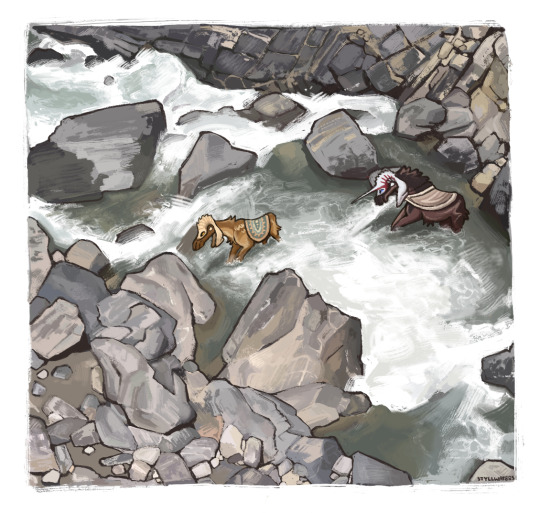
✦ Trail ✦
Background study for fun :] started this in December and abandoned it for a while before picking it up again. Here's Gazi-miah and Jes-ren on a hike together, not long after Gaz moved into the Valley Ranch. The surrounding terrain is full of rivers and canyons.
Reference image used:
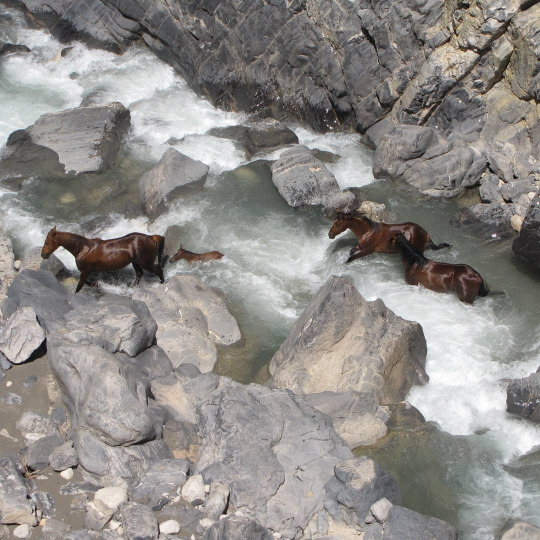
Some progress shots:
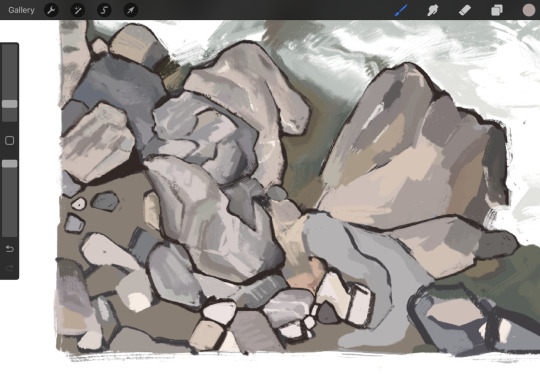
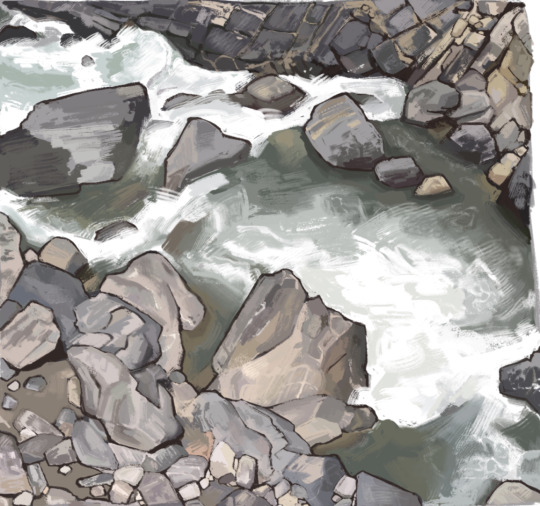
#vivere 44#speculative biology#illustration#my art#art#spec bio#knights#ettera#oc#original characters#I haven't introduced Jes-ren properly yet but I will in due time#my blorbos#artists on tumblr#photo study#digital art
288 notes
·
View notes